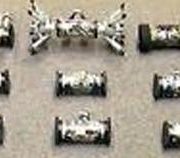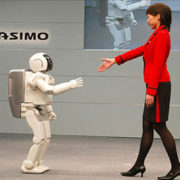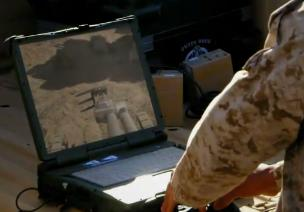 You can spot an AMREL laptop being used as an Operator Control Unit for a PackBot at about 59 seconds into this episode of NCIS: Los Angeles. For once, TV gives a relatively accurate depiction of how unmanned systems are actually used. Watch video.
You can spot an AMREL laptop being used as an Operator Control Unit for a PackBot at about 59 seconds into this episode of NCIS: Los Angeles. For once, TV gives a relatively accurate depiction of how unmanned systems are actually used. Watch video.
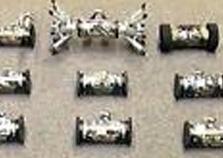 Why are unmanned systems developers offering so many different kinds of platforms and ideas, when there is comparatively little demand by the civilian market? Why are there more offerings than customers?
Why are unmanned systems developers offering so many different kinds of platforms and ideas, when there is comparatively little demand by the civilian market? Why are there more offerings than customers?
These questions were raised in the Unmanned Systems group in LinkedIn. It provoked a number of insightful comments about the current state of unmanned systems and its future. If you are a member of LinkedIn, and can log in, you can read the discussion here. Read more
 I am going to make a number of assumptions about a certain group of roboticists. They:
I am going to make a number of assumptions about a certain group of roboticists. They:
- May have heard the term “Uncanny Valley.”
- Are vaguely aware that it has something to do with people’s revulsion of certain types of humanoid robots.
- Feel the concept of “Uncanny Valley” has nothing to do with them, because they deal with “real” robots, not those faddish, impractical, Japanese human imitation contraptions.
If the above describes you, guess what? You are wrong; the “Uncanny Valley” may impact your work, and sooner than you think.
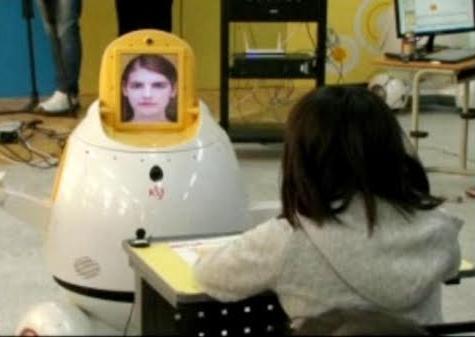 Update: This telepresence article inspired more than a few comments in LinkedIn discussion groups. With the authors’ permission, we are reposting comments made by Tandy Trower of Hoaloha Robotics, and Jim Gunderson of Gamma Two Robots.
Update: This telepresence article inspired more than a few comments in LinkedIn discussion groups. With the authors’ permission, we are reposting comments made by Tandy Trower of Hoaloha Robotics, and Jim Gunderson of Gamma Two Robots.
“For certain types of scenarios, telepresence is very useful. For example, it has enabled us to explore the surface of Mars, inspect the nuclear reactor buildings in Japan, and enable soldiers to remotely defuse bombs. However, for business and personal/consumer scenarios it is much less clear if the value proposition works. Read more
 Here we are, well into the second decade of a new millennium, and not only is there a conspicuous absence of jet packs, but also no robot butler made my breakfast this morning. Domestic robots are not completely unknown, of course. There’s the famous vacuuming Roomba, and home-based medical robots are starting to appear. Yet, while robots are ubiquitous in industry, and rapidly expanding in the military sphere, their presence in our homes is minimal. Read more
Here we are, well into the second decade of a new millennium, and not only is there a conspicuous absence of jet packs, but also no robot butler made my breakfast this morning. Domestic robots are not completely unknown, of course. There’s the famous vacuuming Roomba, and home-based medical robots are starting to appear. Yet, while robots are ubiquitous in industry, and rapidly expanding in the military sphere, their presence in our homes is minimal. Read more
December Update If you are not reading The Robot Report (and you should be; it’s one of the best things on the web about the robotic industry), you may have missed their article about the Fukushima Daiichi disaster. Much of what it says will not be news to the readers of this blog, but one paragraph caught my attention:
“In the case of Fukushima, both iRobot and QinetiQ, companies that volunteered equipment to Tepco, instructors found that senior Tepco employees were chosen to be trained to operate the American and British robots yet they were less suited to the task than the 20-year olds who had gamer experience. The remote-controlled PackBot and Talon robots and the RC Bobcat tractors, all used gaming consoles to operate their devices and the senior employees were slow to learn. In a recent Webinar on the issue by Robotic Trends, the trainers found that 20-year olds learned in less than a day while it took the older Tepco employees many days to gain the same level of competence.”
With the recent rapid growth of unmanned systems, there has been much speculation about the disruptive effects of their wide-spread adoption. A commonly-held view is that low-skilled workers will be displaced, while an educated elite (presumably people who make robots) will continue to thrive. Read more
 Should robots walk or roll? While the answer to this question is obvious for certain applications, it has implications for the entire robot industry, and society as a whole.
Should robots walk or roll? While the answer to this question is obvious for certain applications, it has implications for the entire robot industry, and society as a whole.
Colin Angle, CEO of iRobot, has seen the future of robots, and they aren’t walking. In an interview with Pilots Presence (reprinted in IEEE Spectrum), Angle criticized the millions of dollars spent on developing bipedal robots. These systems often require large groups of support personnel during operation, and have a Mean Time To Failure of 45 minutes. Angle compares these delicate, slow-moving, humanoid systems to the robust iRobot Warrior UGV, which uses treads. Watch this video of the Warrior 710 running rampant over rocks and up stairs, and you will understand his preference for non-legged robots. Wheeled/treaded robots are cheaper, simpler, and more rugged. Read more
 Farms grow more than just food. For the last couple of years, one of the biggest crops has been unmanned systems. Click here to read about it.
Farms grow more than just food. For the last couple of years, one of the biggest crops has been unmanned systems. Click here to read about it.
Wired has a video featuring MESA’s amazing ACER UGV as well as its autonomy programming, which was created by the folks at 5D. At the 5 minute, 20 second mark of the video, you can see the AMREL laptop that’s serves as ACER’s Operator Control Unit. Check out Exclusive Video: Robot Mini-Tank Battles Homemade Bombs
With tongue firmly placed in cheek, Military’s & Aerospace Electronics Report’s John Keller expresses his concern about the latest social ill. After viewing the numerous displays of rugged, ”throwable” robots at the recent AUVSI gathering, he worries about Unmanned Vehicle Abuse. Video below.
American Reliance, Inc.
789 N Fair Oaks Ave,
Pasadena, CA 91103
Office Hours
Monday-Friday:
8:00 am – 5:00 pm PST
Saturday: Closed
Sunday: Closed
Main: +1 (626) 482-1862
Fax: +1 (626) 226-5716
Email: AskUs@amrel.com
Blog Posts
Mobile Biometric Solutions
Mobile Biometric Smartphones & Tablets
BioFlex S® Commercial Smartphones
BioSense AT80B | 8″ Android Biometric Tablet
BioSense PA5 | 10.1″ (Gen 2) Android Biometric Tablet
BioSense PA5 | 10.1″ Android Biometric Tablet
BIOPTIX PM3B | 7″ Windows Biometric Tablet
BIOPTIX PM5B | 10.1″ Windows Biometric Atom Tablet


